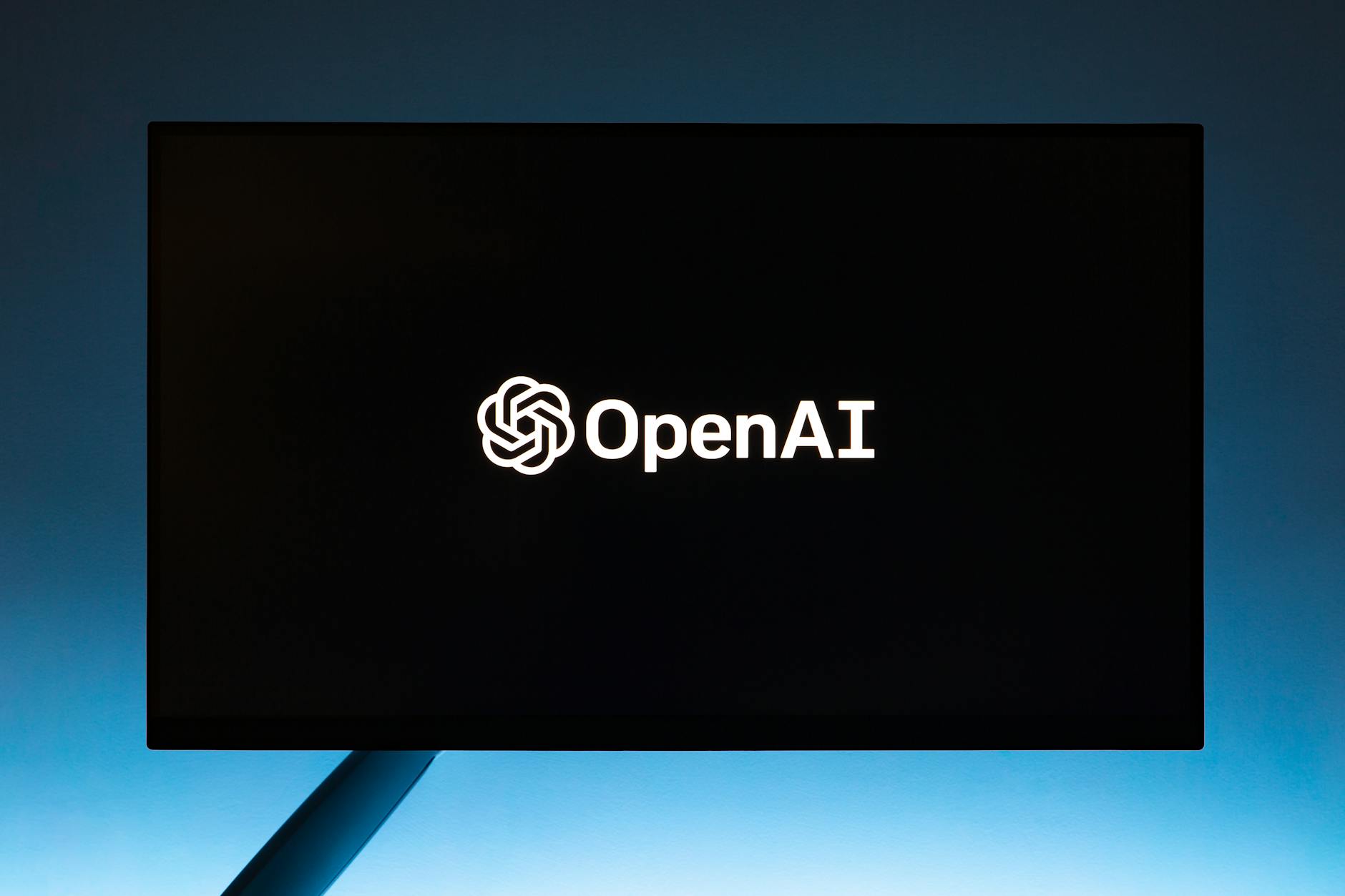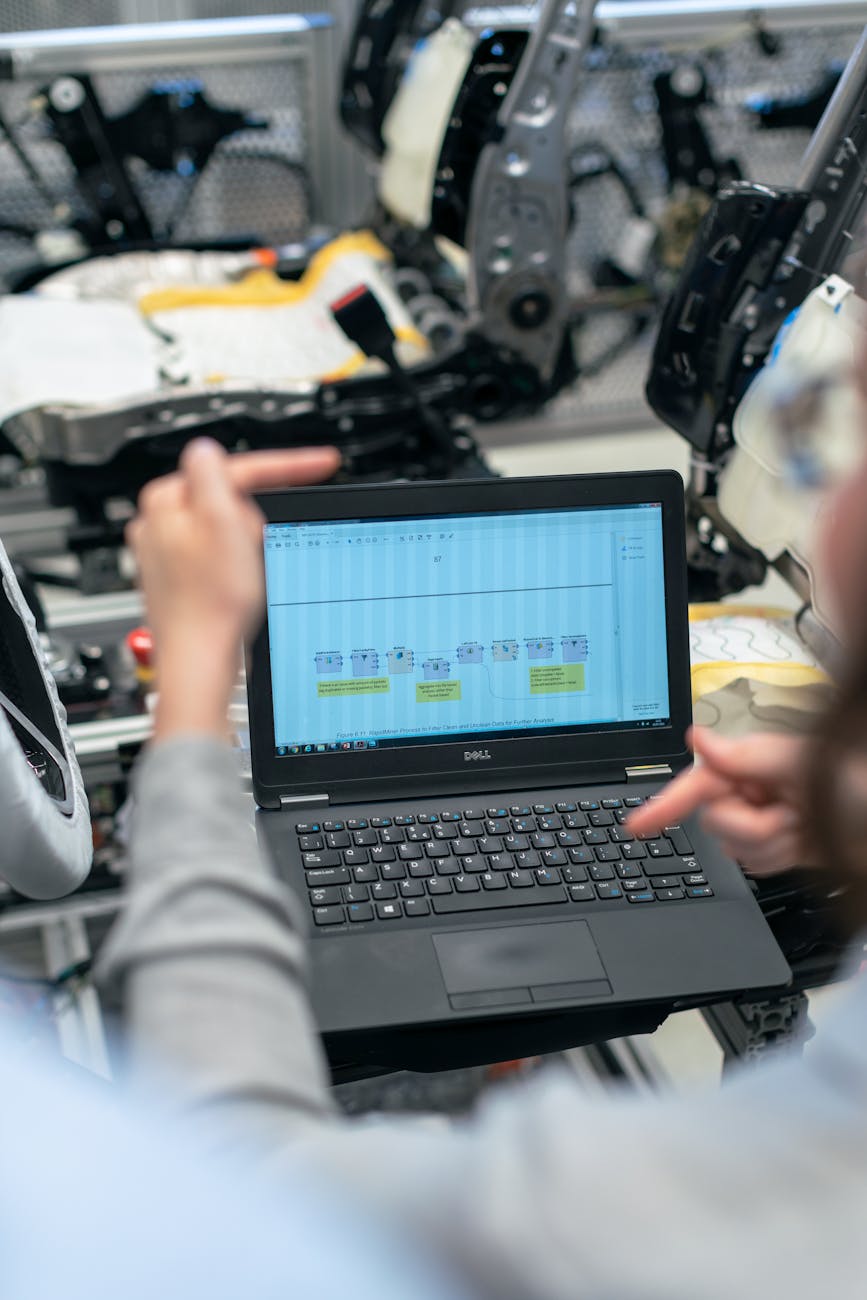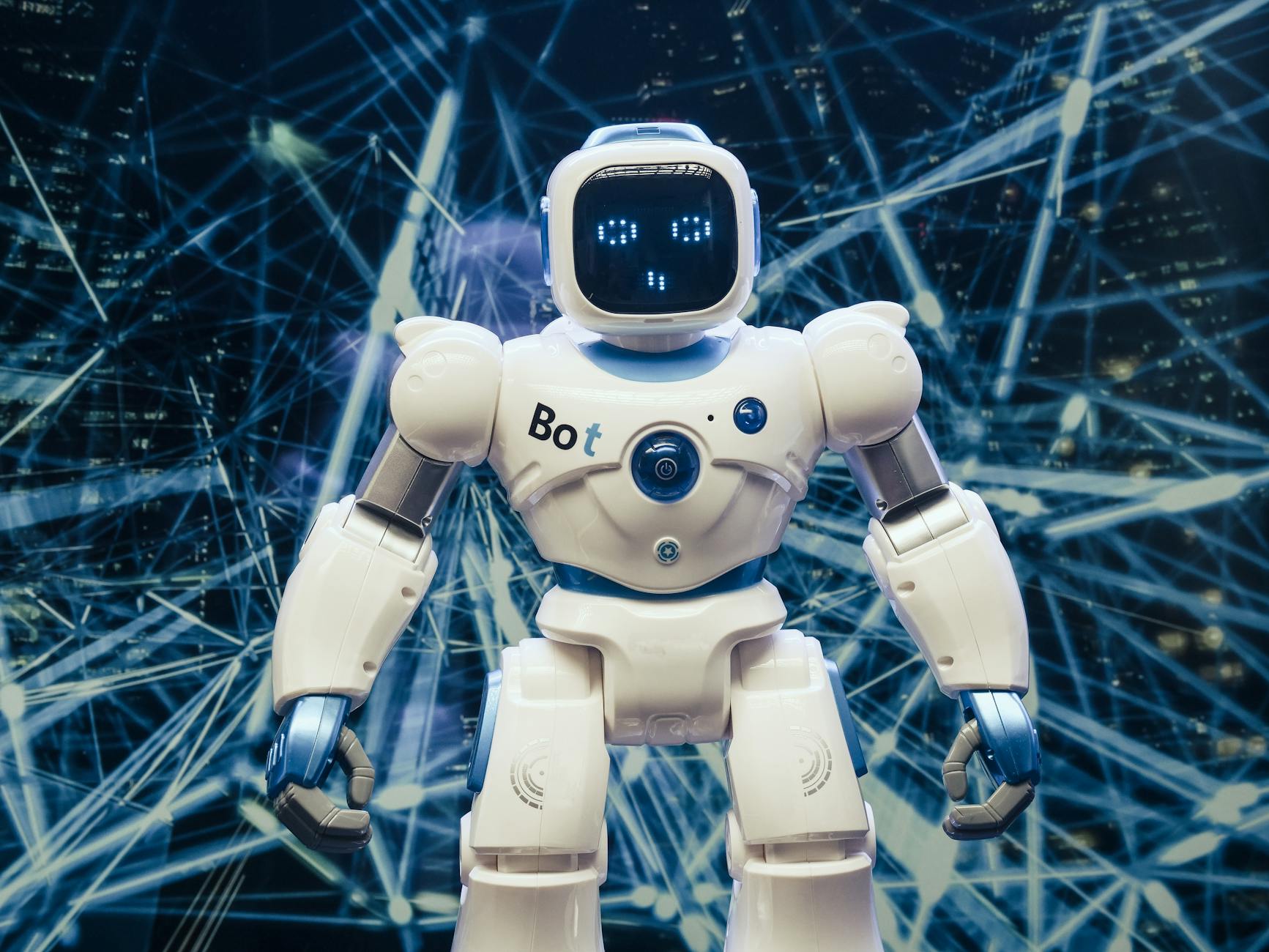The Future of Learning
The Rise of Self-Paced Learning Platforms
Self-paced learning platforms have gained significant traction in recent years. These platforms allow learners to progress through courses at their own speed, accommodating various learning styles and schedules. This flexibility is particularly beneficial for businesses aiming to enhance employee training and development.
The demand for self-paced learning solutions has surged, driven by the need for continuous skill development in a rapidly changing job market. Organizations are increasingly adopting these platforms to provide tailored training experiences that align with individual employee needs.
| Year | Growth Rate (%) |
|---|---|
| 2018 | 15 |
| 2019 | 20 |
| 2020 | 25 |
| 2021 | 30 |
| 2022 | 35 |
How AI is Revolutionizing Personalized Learning
Artificial intelligence (AI) is transforming the landscape of personalized learning. By leveraging AI technologies, self-paced learning platforms can offer customized learning experiences that adapt to the unique needs of each learner.
AI algorithms analyze user behavior, preferences, and performance data to create personalized learning paths. This adaptive learning technology ensures that learners receive content that is relevant and engaging, ultimately enhancing their educational experience.
The integration of machine learning in education further refines this process. As learners interact with the platform, the system continuously learns from their progress, adjusting the content and difficulty level accordingly. This results in a more effective learning environment that promotes retention and understanding.
| Feature | Description |
|---|---|
| Adaptive Learning Paths | Customizes the learning journey based on individual progress. |
| Real-Time Feedback | Provides immediate insights into performance, allowing for quick adjustments. |
| Personalized Recommendations | Suggests relevant courses and materials based on user behavior. |
By embracing AI-driven personalized learning platforms, businesses can foster a culture of continuous improvement and skill enhancement. For more information on the benefits of personalized learning platforms, visit our article on personalized learning platforms.
Key Features of Self-Paced Learning Platforms
Self-paced learning platforms are transforming the educational landscape by offering unique features that enhance the learning experience. These platforms leverage technology to provide tailored educational journeys, making them ideal for businesses aiming to innovate in the industry.
Adaptive Learning Paths
Adaptive learning paths are a cornerstone of self-paced learning platforms. This feature allows the system to adjust the learning experience based on the individual’s progress and understanding. By analyzing user performance, the platform can recommend specific content and activities that align with the learner’s needs.
| Feature | Description |
|---|---|
| Customization | Learners receive content tailored to their skill level. |
| Progress Tracking | The system monitors progress and adjusts the path accordingly. |
| Engagement | Keeps learners motivated by providing relevant challenges. |
For more information on how this technology works, visit our article on adaptive learning technology.
Interactive Content
Interactive content is essential for maintaining learner engagement. Self-paced learning platforms often incorporate multimedia elements such as videos, quizzes, and simulations. This interactive approach not only makes learning more enjoyable but also reinforces knowledge retention.
| Content Type | Benefits |
|---|---|
| Videos | Visual learning aids that enhance understanding. |
| Quizzes | Immediate assessment of knowledge and skills. |
| Simulations | Real-world scenarios that provide practical experience. |
These elements contribute to a more dynamic learning environment, making it easier for learners to grasp complex concepts. For insights into how technology enhances learning, check out our article on machine learning in education.
Real-Time Feedback
Real-time feedback is a critical feature of self-paced learning platforms. This functionality allows learners to receive immediate responses to their actions, helping them identify areas for improvement. Instant feedback fosters a growth mindset and encourages continuous learning.
| Feedback Type | Description |
|---|---|
| Instant Results | Learners see their performance right after completing an activity. |
| Personalized Suggestions | Recommendations for improvement based on performance data. |
| Progress Reports | Regular updates on learning achievements and areas needing attention. |
This feature is vital for creating a supportive learning environment. For more on tailored educational experiences, explore our article on individualized learning solutions.
These key features of self-paced learning platforms highlight their potential to revolutionize the learning experience, making them an attractive option for businesses looking to disrupt the industry with AI-driven solutions.
Comparison of Self-Paced Learning Platforms
In the landscape of self-paced learning, various platforms offer unique features and benefits tailored to enhance the learning experience. Below is a comparison of three notable platforms, highlighting their strengths and capabilities.
Platform A: Features and Benefits
Platform A is designed to provide a comprehensive learning experience with a focus on adaptability and user engagement. Key features include:
| Feature | Description |
|---|---|
| Adaptive Learning Paths | Customizes the learning journey based on individual progress and performance. |
| Interactive Content | Engages learners through quizzes, videos, and simulations. |
| Real-Time Feedback | Offers immediate insights on performance, allowing for quick adjustments. |
Benefits of Platform A include improved learner retention and a personalized approach that caters to diverse learning styles. For more on adaptive learning, visit our article on adaptive learning technology.
Platform B: Features and Benefits
Platform B emphasizes collaboration and community within the learning environment. Its features include:
| Feature | Description |
|---|---|
| Social Learning Tools | Facilitates interaction among learners through forums and group projects. |
| Gamification Elements | Incorporates game-like features to motivate and engage users. |
| Progress Tracking | Allows learners to monitor their advancement and set goals. |
The benefits of Platform B lie in its ability to foster a sense of community and enhance motivation through collaborative learning. For insights on how technology can enhance education, check out our article on machine learning in education.
Platform C: Features and Benefits
Platform C focuses on providing a streamlined and efficient learning experience. Its key features include:
| Feature | Description |
|---|---|
| User-Friendly Interface | Simplifies navigation and access to learning materials. |
| Mobile Compatibility | Enables learning on-the-go through mobile devices. |
| Comprehensive Analytics | Provides detailed reports on learner performance and engagement. |
The advantages of Platform C include accessibility and ease of use, making it suitable for a wide range of learners. For more information on tailored learning experiences, explore our article on individualized learning solutions.
By comparing these self-paced learning platforms, businesses can identify the most suitable options to enhance their training programs and drive engagement among learners.
Customization and Flexibility
Self-paced learning platforms offer significant customization and flexibility, making them ideal for businesses aiming to enhance their training programs. These features allow organizations to tailor learning experiences to meet the unique needs of their employees.
Tailoring Learning Experiences
Customization is a key advantage of self-paced learning platforms. They enable businesses to create personalized learning paths that align with individual goals and skill levels. This adaptability ensures that learners can progress at their own pace, focusing on areas where they need improvement.
| Feature | Description |
|---|---|
| Personalized Learning Paths | Learners can choose courses based on their interests and career objectives. |
| Skill Assessments | Initial assessments help identify knowledge gaps, allowing for targeted learning. |
| Content Variety | A mix of videos, quizzes, and interactive modules caters to different learning styles. |
By utilizing adaptive learning technology, organizations can further enhance the personalization of their training programs. This technology adjusts the learning experience in real-time based on the learner’s performance, ensuring that they receive the most relevant content.
Accessibility and Convenience
Accessibility is another critical aspect of self-paced learning platforms. These platforms are designed to be user-friendly and available across various devices, allowing learners to access content anytime and anywhere. This flexibility is particularly beneficial for businesses with remote or distributed teams.
| Accessibility Feature | Benefit |
|---|---|
| Mobile Compatibility | Employees can learn on-the-go, fitting training into their schedules. |
| 24/7 Availability | Learners can access materials at their convenience, promoting self-directed learning. |
| Multi-Device Support | Content can be accessed on smartphones, tablets, and computers, enhancing user experience. |
The convenience of self-paced learning platforms not only increases engagement but also supports continuous learning. Employees can revisit materials as needed, reinforcing their understanding and retention of information. For more insights on how these platforms can enhance learning, explore our article on personalized learning platforms.
By focusing on customization and accessibility, businesses can create effective training programs that empower employees to take charge of their learning journeys.
Maximizing Learning Potential
Self-paced learning platforms leverage advanced technologies to enhance the learning experience. By utilizing artificial intelligence (AI), these platforms can provide personalized recommendations, track progress, and promote continuous improvement.
Utilizing AI for Personalized Recommendations
AI plays a crucial role in tailoring learning experiences to individual needs. By analyzing user behavior and preferences, AI algorithms can suggest relevant courses, resources, and activities that align with each learner’s goals. This personalized approach increases engagement and helps learners stay motivated.
| Feature | Description |
|---|---|
| User Behavior Analysis | Tracks interactions to understand learning patterns. |
| Course Recommendations | Suggests courses based on interests and past performance. |
| Resource Allocation | Provides additional materials tailored to individual needs. |
For more information on how AI enhances learning, explore our article on personalized learning platforms.
Tracking Progress and Performance
Effective self-paced learning platforms include tools for tracking progress and performance. These features allow learners to monitor their achievements and identify areas for improvement. Regular assessments and feedback help learners stay on track and adjust their study habits as needed.
| Tracking Feature | Purpose |
|---|---|
| Progress Dashboards | Visual representation of completed modules and courses. |
| Performance Analytics | Detailed insights into strengths and weaknesses. |
| Goal Setting | Allows learners to set and track personal learning objectives. |
For insights on how adaptive learning technology can enhance tracking, visit our article on adaptive learning technology.
Continuous Learning and Improvement
Self-paced learning platforms encourage a culture of continuous learning. By providing access to a variety of resources and opportunities for skill enhancement, these platforms support ongoing development. Learners can revisit materials, explore new topics, and engage in collaborative projects to further their knowledge.
| Continuous Learning Feature | Benefit |
|---|---|
| Resource Libraries | Access to a wide range of learning materials. |
| Community Forums | Opportunities for discussion and collaboration with peers. |
| Regular Updates | Keeps content current and relevant to industry trends. |
For more on how machine learning contributes to ongoing education, check out our article on machine learning in education.
By maximizing the potential of self-paced learning platforms through AI-driven recommendations, progress tracking, and a focus on continuous improvement, businesses can effectively disrupt the industry and foster a culture of lifelong learning.
Implementing Self-Paced Learning Platforms
Integrating self-paced learning platforms into existing training programs can significantly enhance the learning experience for employees. This section discusses the key aspects of implementation, including integration, employee engagement, and measuring success.
Integration with Existing Training Programs
Successful implementation of self-paced learning platforms requires seamless integration with current training initiatives. Organizations should assess their existing programs and identify areas where self-paced learning can complement or enhance traditional methods.
| Integration Aspect | Considerations |
|---|---|
| Content Compatibility | Ensure that the content from the self-paced platform aligns with existing training materials. |
| Technology Infrastructure | Evaluate the current technology setup to support the new platform. |
| User Experience | Focus on creating a smooth transition for users to adapt to the new learning environment. |
By aligning the self-paced learning platform with existing training programs, businesses can create a cohesive learning ecosystem that maximizes the benefits of both approaches. For more insights on personalized learning, explore our article on personalized learning platforms.
Employee Engagement and Motivation
Engaging employees in their learning journey is crucial for the success of self-paced learning platforms. To foster motivation, organizations can implement strategies that encourage active participation and commitment to learning.
| Engagement Strategy | Description |
|---|---|
| Gamification | Incorporate game-like elements to make learning more enjoyable and competitive. |
| Social Learning | Facilitate collaboration and discussion among employees to enhance learning experiences. |
| Recognition and Rewards | Acknowledge achievements and milestones to motivate continued progress. |
By focusing on employee engagement, organizations can create a culture of continuous learning that drives performance and satisfaction. For more on adaptive learning, check out our article on adaptive learning technology.
Measuring ROI and Success Metrics
To evaluate the effectiveness of self-paced learning platforms, businesses must establish clear metrics for success. Measuring return on investment (ROI) involves analyzing various factors that contribute to the overall impact of the learning initiative.
| Success Metric | Measurement Method |
|---|---|
| Completion Rates | Track the percentage of employees who complete courses. |
| Knowledge Retention | Assess retention through quizzes or assessments post-training. |
| Performance Improvement | Measure changes in employee performance metrics before and after training. |
By systematically measuring these metrics, organizations can gain valuable insights into the effectiveness of their self-paced learning initiatives. For further exploration of machine learning applications in education, visit our article on machine learning in education.
Implementing self-paced learning platforms effectively can transform the learning landscape within organizations, driving engagement and enhancing overall performance.
Want to grow your business online with smarter strategies? Kara Digital offers data-driven digital marketing services and powerful AI solutions to help you scale faster and more efficiently. Let’s turn your vision into measurable success.











